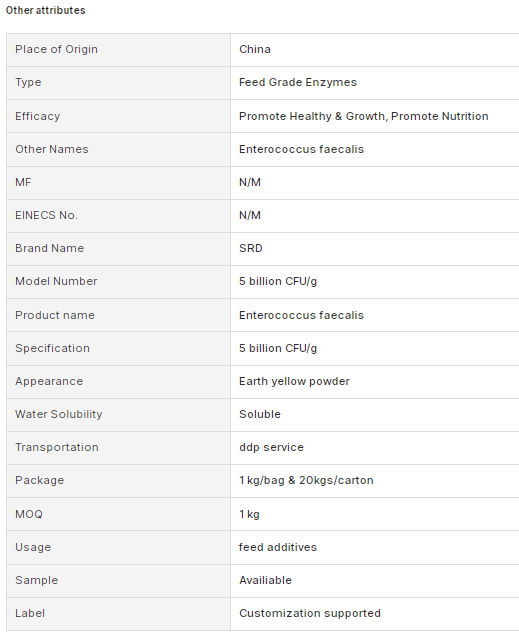【Functions and Effects】Enterococcus faecalis is a Gram-positive facultative anaerobic bacterium. In aquaculture, it mainly has the following functions:
Maintaining the Microecological Balance of the Digestive Tract: Enterococcus faecalis can tolerate a relatively low pH and has a high tolerance to gastric juice, intestinal juice, and bile salts. It can smoothly pass through the stomach and colonize in the intestine, providing a prerequisite for exerting the functions of probiotics. After Enterococcus faecalis colonizes in the intestine, it can proliferate in large numbers, inhibit the growth of harmful microorganisms, regulate the microecological balance of the intestine, and reduce the occurrence of intestinal diseases.
Nutritional Role and Promoting Growth: The L-type lactic acid secreted by Enterococcus faecalis after colonizing in the intestine can enhance the digestive and absorptive capacity of the intestine. Enterococcus faecalis can increase the activities of digestive enzymes such as proteases, amylases, lipases, and cellulases in the digestive tract of aquatic animals. These enzymes can promote the decomposition of proteins, fats, and complex carbohydrates in the feed, and the finally generated monomers and energy are supplied to the growth and development of the body, thereby increasing the digestive and absorptive rate of the feed and promoting the growth of aquatic animals.
Strengthening Immunity: Enterococcus faecalis helps to strengthen the immune system, effectively enhancing the activities of lysozyme, antioxidant activity, catalase activity, or enhancing the expression of immune genes, such as regulating the expression of genes related to oxidative stress response and stress release, and stimulating the cytokines produced by macrophages. The roles played by these factors are of great importance in the immune system of aquatic animals.
Inhibiting Pathogenic Bacteria: Enterococcus faecalis can produce lactic acid during its growth process, which is a rare characteristic among Enterococcus faecalis. In this way, it can create a low pH environment in the intestines and stomachs of fish and shrimp, which helps to compete with other bacterial species and prevent their growth, especially that of pathogenic bacteria.


